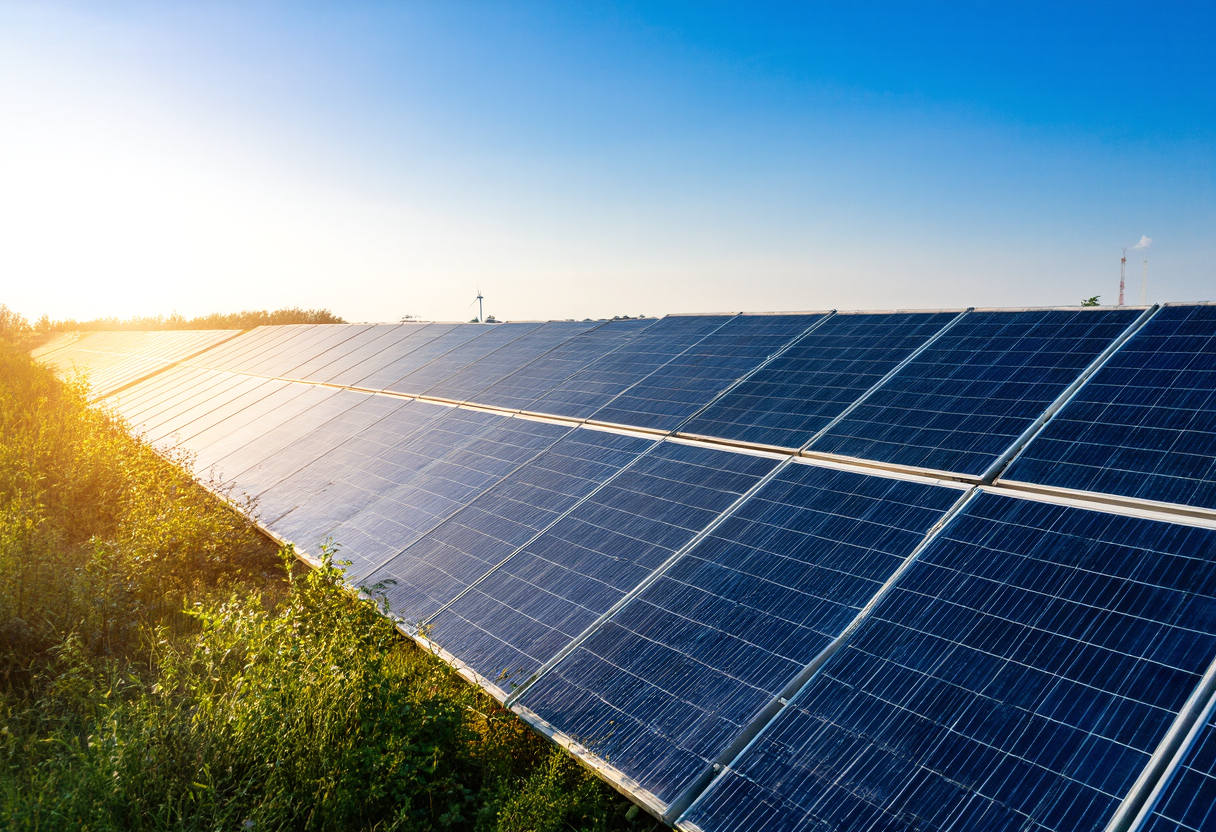The Rising Popularity of Polycrystalline Solar Panels: A Sustainable Choice
As the world increasingly turns to renewable energy sources, polycrystalline solar panels have gained traction due to their affordability and efficiency. This article explores the benefits, challenges, and growing market for these solar technologies, revealing why they are a sustainable choice for energy production.
Understanding Polycrystalline Solar Panels
Polycrystalline solar panels, known for their distinctive blue hue and affordability, have become a common sight in residential and commercial solar setups. These panels are made from silicon crystals that are melted together, which allows for the creation of larger panels at a lower cost compared to monocrystalline options. As energy demands grow and environmental concerns mount, polycrystalline solar panels stand out as a cost-effective solution for harnessing solar energy. Their ease of manufacturing contributes to decreasing prices, making renewable energy more accessible to a broader audience. Importantly, this lower cost does not significantly compromise their efficiency, which remains productive in various climatic conditions, thus ensuring reliable energy output. Moreover, the energy payback period of polycrystalline panels is relatively short, meaning they can generate more energy within their operational lifespan than was consumed during their production, underscoring their sustainability. Ultimately, understanding how polycrystalline solar panels work is key to recognizing their potential benefits in the renewable energy landscape.
The Benefits of Choosing Polycrystalline Solar Panels
Opting for polycrystalline solar panels offers numerous advantages. First and foremost, these panels are generally less expensive to produce, making them a more affordable option for homeowners and businesses alike. This price point allows for more widespread adoption without a significant financial burden. Additionally, polycrystalline solar panels are known for their durability and lower temperature sensitivity, ensuring consistent performance even in less-than-ideal conditions. These features make them attractive for various installations, from rooftops to larger solar farms. The manufacturing process also results in a lower environmental impact compared to other solar panel types, further enhancing their appeal to eco-conscious consumers. Importantly, the efficiency rates of polycrystalline panels, while slightly lower than their monocrystalline counterparts, still provide ample energy production for most users. In the context of rising energy costs and increasing demand for clean energy sources, polycrystalline solar panels present an attractive and practical solution.
Challenges Facing Polycrystalline Solar Panels
Despite their many benefits, polycrystalline solar panels also face several challenges. One significant drawback is their slightly lower efficiency rating compared to monocrystalline solar panels. While polycrystalline panels can produce sufficient energy for many applications, those with limited rooftop space might find monocrystalline options more appealing due to their space efficiency. Furthermore, the production of polycrystalline solar panels involves the use of specific raw materials, which may become scarce as global demand for solar energy rises. Fluctuations in material availability can lead to price increases, potentially impacting the affordability of these panels in the long term. Another challenge includes the aesthetic appeal; some consumers find the blue hue of polycrystalline panels less visually appealing than the black finish of monocrystalline products. These factors present important considerations for potential buyers when evaluating the best solar energy solutions for their needs.
The Market for Polycrystalline Solar Panels
The market for polycrystalline solar panels has expanded significantly in recent years, driven by increasing demand for renewable energy solutions. Governments, environmental organizations, and businesses are actively promoting the transition towards cleaner energy, creating a conducive environment for the growth of solar technologies. Additionally, technological advancements are continuously enhancing the efficiency and durability of polycrystalline panels, making them increasingly competitive in the marketplace. As more manufacturers enter the scene, prices for these panels are likely to remain stable or even decrease, further encouraging adoption. Solar incentives, subsidies, and rebates provided by various governments also contribute positively to the expansion of the solar market, making it easier for consumers to invest in sustainable technologies. The continuous investment in research and development is paving the way for innovative solutions that will improve the efficiency and eco-friendliness of polycrystalline solar panels. Consequently, the market outlook for these solar panels appears promising amid a global shift towards sustainable energy sources.
Real-World Applications of Polycrystalline Solar Panels
In real-world applications, polycrystalline solar panels have proven effective across diverse sectors. Residential rooftops are a prevalent venue for these panels, allowing homeowners to harness solar energy for personal use and reduce reliance on traditional power sources. In the commercial sector, businesses are increasingly installing polycrystalline panels to power operations while minimizing their carbon footprint. Additionally, large-scale solar farms utilizing polycrystalline technology contribute significantly to energy grids, enhancing the overall availability of clean energy. The adaptability of these panels ensures that they can be installed virtually anywhere, from urban environments to rural landscapes. Furthermore, innovations in mounting and tracking technologies are maximizing the energy output of polycrystalline panels, demonstrating their versatility and effectiveness in capturing solar energy.
Conclusion: The Future of Polycrystalline Solar Panels
In conclusion, polycrystalline solar panels represent a sustainable choice in the evolving energy landscape. Their affordability, durability, and practical efficiency make them an attractive option for a variety of consumers, from homeowners to large-scale energy producers. While challenges exist in terms of efficiency and material sourcing, ongoing advancements in technology and market dynamics hint at a bright future for these solar solutions. As awareness of renewable energy continues to grow, so too will the market for polycrystalline solar panels, contributing positively to global sustainability efforts. Ultimately, embracing polycrystalline solar panels not only aligns with eco-friendly values but also promotes energy independence and security.
